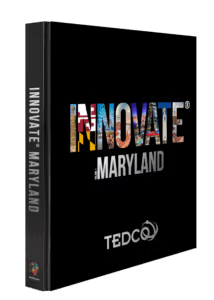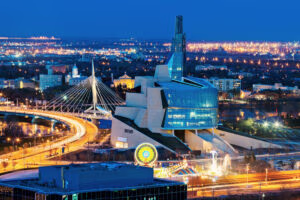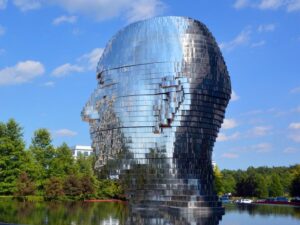When Arthur Sabintsev describes Grove, he leans into vivid analogies. “Imagine an open-air bazaar,” says the CEO and co-founder. “Vendors are hawking their blueberries or camels or rugs, and you need chocolate from Bolivia. You go to a local guide, and that guide takes you to the best Bolivian chocolate provider at that moment in time. That’s what we’ve built – except instead of chocolate, it’s access to blockchains and data.”
That simple metaphor captures a remarkably complex idea. Grove – short for Grove Redefines Our Very Existence – is reshaping how the internet itself connects, coordinates, and pays for digital infrastructure.
From Early Blockchain Frustrations to a Shared Infrastructure Network
Grove’s story began eight years ago when co-founder Michael O’Rourke and his team were building on the Ethereum blockchain. “They came across a problem where, when one of the clouds like Google or Amazon would go down, the company that they would be using to access Ethereum would also go down,” recalls Arthur.
Ethereum was “one of the only non-Bitcoin blockchains out there” and the only programmable one – so dependence on centralized cloud providers broke the very promise of decentralization. “The alternative was to stand up your own blockchain node,” he says, “but that was a completely different skill set.”
The founders built a system to incentivize people to provide blockchain access. That seed grew into Grove’s core innovation: a protocol that connects those who need computing infrastructure with those who have it, coordinated through a self-balancing token economy.
A Leadership Evolution Fueled by Purpose
Arthur joined Grove at the end of 2021 to lead engineering. A physicist by training, he spent a decade as a mobile engineer at companies like The Washington Post and Capital One.
“I first connected with Michael through the iOS development community,” Arthur recalls. “We struck up a friendship, and he originally came to me for advice in mobile development. Later, he went on to build Pocket and eventually hired me.”
“When I joined, the company was around 20 people,” Arthur says. “Soon after, the market hit its peak, and the company grew to 80 people – and then everything shifted. Like every tech company in that period, we had to make difficult choices to steady the business and rethink what we were building.”
“What we’ve built is an internet capital markets insurance policy. Innovation is building something like this – something that has never existed.”
Instead of retreating, Grove used that challenge as a reset. The team refined its mission and rebuilt around its true innovation. “It was a moment for reinvention,” he reflects. “We emerged leaner, sharper, and more aligned with where the world is heading.”
Under his leadership, Grove strengthened its partnerships with organizations like Ripple and Google while re-establishing itself as a critical infrastructure layer for the next generation of internet technology.
Explaining Grove’s Innovation – One Analogy at a Time
To grasp what Grove is building, Arthur offers another metaphor. “We are a utility play in the infrastructure space,” he explains. “Think of ride-sharing. You don’t care if you use Uber or Lyft – but under the hood, they’re both using the same fleet of cars. They just have their own ways of choosing which car is ideal for you.”
Grove is building that shared fleet for the internet – an open, global network where any app, developer, or AI agent can access computing power, data, or blockchain nodes wherever they exist.
Their underlying blockchain, Pocket Network, acts as the coordination layer. “Pocket coordinates infrastructure,” he says. “It connects someone who wants Bolivian chocolate to someone who provides Bolivian chocolate. In technical terms, that’s someone who wants access to the Ethereum blockchain in South America to someone who has an Ethereum node set up there – so the transaction is as fast as possible.”
Powering the Next Generation of Autonomous Agents
Over time, Grove’s vision has expanded far beyond the blockchain world. “We realized who the actual target consumer is,” Arthur says. “It’s these autonomous agents – AI agents.”
“If you want to have a truly autonomous piece of software, you need to give it instructions and let it transact on your behalf,” he explains. “To do that, it needs access to a protocol that allows it to jump between blockchains very quickly to process those transactions.”
Grove’s upgraded Pocket Network now goes beyond blockchains to “support LLMs and other data sources,” becoming what Arthur calls an “open data protocol.” “If you give an LLM access to a crypto wallet and our protocol,” he says, “it can autonomously and sovereignly pay for access to information on the internet without interacting with a human until the job is done.”
This fusion of blockchain logic, AI autonomy, and real-world utility creates the financial plumbing for machine-to-machine commerce.
Building a Public Good – and a Sustainable Business
“We built a public good,” Arthur admits. “But we’re trying to build a business on top of the public good.” Grove’s token model “coordinates supply and demand.” The same digital unit used to pay for infrastructure is deleted when the transaction completes – “$1 in is $1 out,” as Arthur explains – creating a closed-loop economy that keeps the system balanced.
It’s an elegant concept at the frontier of decentralized economics, where sustainability depends on achieving scale and adoption. “We’ve convinced people that they can make money off their spare compute,” he says. “Now we’re focused on showing why this model is essential for resilience and reliability across the internet itself.”
Innovation as an Internet Insurance Policy
When asked what innovation means to him, Arthur’s answer reframes the conversation around Grove’s mission. “It’s building something new – but something that is truly, truly a first-time innovation,” he says. “What we’ve built is an internet capital markets insurance policy. Innovation is building something like this – something that has never existed.”
That conviction has carried Grove through shifting markets and technologies. The company’s focus remains unwavering: enabling a more open, reliable, and intelligent internet – one where machines, humans, and data can all transact freely and fairly.














